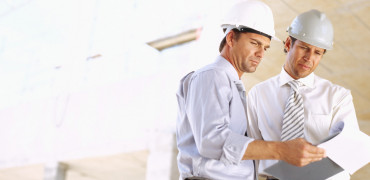As the focus on sustainability and all things environmental ramps up with the UK hosting the landmark COP26 summit later in 2021, the nation’s stock of historic building is finding itself in the spotlight.
In terms of bringing these buildings bang up to date with 21st Century standards of efficiency, these buildings are either viewed with alarm and suspicion or as a welcome and exciting opportunity.
Renovating historic buildings is a challenge. Retrofitting them with the latest energy efficient and renewable systems intensifies that challenge.
But a report by Historic England on behalf of the Historic Environment Forum maintains that carefully retrofitting our historic buildings and homes could save up to 84% in carbon emissions.
The Heritage Counts report, acknowledges that England alone has one of the oldest building stocks in Europe, with a fifth of all homes being over a century old.
The need to reduce the carbon emissions from our historic buildings is a complex process as every building is different and how they function is affected by a range of elements, from size and number of occupants, to the impact of regional weather patterns.
Carbon emissions could be reduced by up to 84% in a detached Victorian home
North / South divide
But research in this year’s report shows that when comparing a traditional terraced home in North West England with an identical property in the South East, there is a 17.6% increase in heating needs for the North West home, which results in a 13.8% increase in total CO₂ emissions.
Duncan Wilson, Chief Executive of Historic England said: “The scale and urgency of climate change requires people to take action now to reduce carbon emissions.
“Our buildings are important sources of embodied carbon, so we know we must reuse them, rather than demolish and rebuild, but as buildings are the third largest carbon emission producers in the UK after transport and industry we must also address their daily emissions.
“From small behavioural changes to larger energy efficiency improvements this new research demonstrates that we can greatly reduce the carbon footprint of our precious historic homes, whilst maintaining what makes them special.”
Recycle and reuse
Historic buildings were built to last across generations.
To meet the government’s target of being carbon neutral by 2050, we must recycle and reuse our existing historic buildings, rather than demolishing and building new, so the CO₂ emissions already embodied within existing buildings are not lost through demolition.
Demolishing buildings not only produces millions of tonnes of waste (three fifths of all waste produced in the UK every year comes from construction, demolition and excavation) but building new has high energy costs and guzzles resources.
There are no simple “one size fits all” solutions to reducing the carbon footprints of historic homes, but homeowners need to consider the retrofit option that avoids waste and avoids carbon.
This means keeping on top of repair and maintenance at home to improve the condition of its existing materials.
It also means planning well for a retrofit, using fewer new materials with large carbon footprints, which are often imported from abroad, and instead using natural, durable and recycled materials.
Huge carbon savings
Modelled examples in the report show that carefully retrofitting our historic homes can lead to substantial carbon savings in the long term.
Carbon emissions could be reduced by up to 84% in a detached Victorian home, 62% in a Georgian terrace, 58% in a 1900s terrace, 56% in a Victorian semi-detached and 54% in a Victorian terrace.
In April, the Chartered Institute of Building (CIOB) hosted its annual conservation conference - ‘Balancing Heritage and Sustainability’.
The conference focussed on sustainability in relation to heritage and traditional buildings and dealing with climate change.
Themes explored included best practice, retrofit standards, science and the latest research as well as the 'unexpected consequences' of inappropriate interventions to traditional buildings.
Conservation and the CIOB
The CIOB has this year expanded its course, which is backed by English Heritage, that introduces the philosophy behind conservation.
It goes into detail regarding the technical analysis of buildings, ensembles and sites, diagnosing issues, identifying the best building conservation solutions, working with the various stakeholders, and ultimately providing advice regarding best practice.
The challenge of our historic building stock should be viewed as a golden opportunity. As well as safeguarding hugely important pieces of our heritage for future generations, the benefits of successful retrofit programmes are proven to be significant and worth the investment of time and resources.
Adrian Olivier, Chair of the Historic Environment Forum said: “Urgent action to combat climate change is among the 2030 United Nations Global Sustainable Goals.
“To be effective, action must be taken at every level and by everyone, not just Governments - we are all responsible and we can all contribute - collectively and individually.”
Paul Groves is editor of Specification magazine



